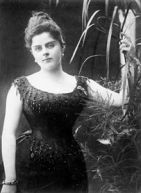Susan Appleyard's Blog, page 16
November 18, 2016
In the steps of Ludwig II.
This summer I took a long holiday to Europe. The purpose of the holiday was a little research into the life of Ludwig II, King of Bavaria, the subject of my present work-in-progress. (At least that’s what I tell myself. Otherwise, it would just be an exercise in self-indulgence, wouldn’t it?) We started off in England visiting family and old friends, and then flew to Munich. Our first excursion was to Nymphenburg Castle where Ludwig was born and the second was to the Residenz, the principal city palace of the kings of Bavaria.
 Glockenspiel
GlockenspielAlong the way, we also saw the famous Glockenspiel, took a long walk through the English Garden and visited the Hofbrauhaus for some Bavarian beer and oom-pah-pah music.
Then we drove a short distance south to Lake Starnberg and visited the place where Ludwig met his tragic end. A simple cross stands in the water there, erected by his mother. She also built the memorial chapel that overlooks the spot.
 Hohenschwangau
HohenschwangauNow came the highlight of our visit. Farther south was Schwangau. From this typically quiet and picturesque Bavarian village, we could see both Hohenschwangau and Neuschwanstein on their mountain perches. Hohenschwangau means High Country of the Swan – how romantic is that? It was built by Ludwig’s father, but it was important to me because Ludwig spent much of his boyhood there. It was where he learned to love the old German sagas, which are depicted on the walls and became such an important influence in his life, as well as such elements as swans, peacocks and water, which are featured in all his palaces. He often lived there also while he was watching Neuschwanstein being built.
 Neuschwanstein
NeuschwansteinAfter a rather stiff climb, we made it to Neuschwanstein, the castle that has captured the public imagination as no other. I will not attempt to describe it, except to say that it was like Ludwig himself: imaginative, brilliant, unexpected, eccentric, but gloomy and, even with hundreds of tourists tramping through, imbued with an aura of mystery and tragedy.
The country round about is equally compelling. In one direction it has a broad view of the plain, another overlooks two emerald green lakes, the Alpsee and the Schwansee, on which swans still sail in all their aloof majesty. Another view is of a steep drop to the Pollat River and gorge, with the mountains in the background. Ludwig loved the mountains.
We went on then to other places not associated with Ludwig, including Venice and Sorrento in Italy, but the most magical part for me was the time we spent in Schwangau.


November 8, 2016
Mexico’s fighting Irish
As some of you may know, simply because I am a very fortunate person, I am able to spend half the year in Canada and the other half in Mexico. (No prizes for guessing which season is spent where.) Mexico is a wonderful country with stunning scenery and kind, friendly people, and they really know how to party. Some of their festivals are days long. I had been coming here for several years before it occurred to me to wonder why, on March 17th, there is a BIG party to celebrate St. Patrick’s Day. I’m talking green beer, green dress, music and dancing until the wee hours. The Mexicans don’t celebrate Sts. George, Andrew or David. Why Patrick? I decided to look into it.
The story goes that in 1846 when hostilities broke out between the U.S. and Mexico, thousands of Irish immigrants joined the U.S. army and served under General Zachary Taylor. Some of these men began to ask why they were fighting fellow Catholics on behalf of a country where they were treated badly both in civilian life and the army. They may also have realised that the U.S. interest was exploitation. Led by Captain John Riley of County Galway, at least 185 Irish went over to the Mexicans and called themselves the St. Patrick brigade – the San Patricios. Over the course of the war, the battalion grew in number as other immigrants joined, with some estimates as high as 700. Not all were Irish, but most were immigrants.
 Battle banner of the San Patricios
Battle banner of the San PatriciosThings did not go well for the Mexicans in that war, but the Irish fought bravely on for the full two years. At the final battle of Churubusco, hand-to-hand fighting took place in the halls and rooms of the monastery. Some 60% of the San Patricios were killed or captured in the battle. Of 83 who were captured, 72 were court-martialed, of which 50 were hanged and the rest flogged and branded. The Yankees overran Mexico City and Mexico eventually surrendered.
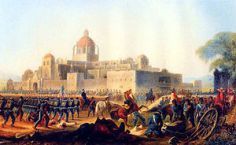 The convent at Churubusco
The convent at ChurubuscoAfter the war, the Mexican government insisted in a clause to the treaty that all San Patricio prisoners be released.
While in prison in Mexico City, Captain Riley wrote to a friend: ‘Be not deceived by a nation that is at war with Mexico, for a friendlier and more hospitable people than the Mexicans there exists not on the face of the earth.’ I second that. They welcome us snowbirds and vacationers. Their nature is such that they shrug off the arrogance and ignorance of those who treat them like second-class citizens in their own country.
To many in the U.S. who know the story, the San Patricios are a bunch of traitors, but to the Mexicans they are heroes. Today they are honoured in a special service on Sept. 12th, as well as on March 17th. The Irish honour them in Clifden, County Galway, Riley’s home town.
Many a Yank raises a glass of green beer at the St. Patrick’s Day parties, but I wonder if they know why.


October 31, 2016
Weep, Ingeborg, weep
An interesting post from the interesting Anna Belfrage.
In 1237, Ingeborg, Dowager Queen of France, died. At the time of her death, she was approximately sixty years old, and had lived more than forty years in France, having arrived as a young and pretty bride-to be in 1193. Her intended was Philip II, King of France, a.k.a. Philip Augustus. At the time, he was pushing thirty, ten years or so older than his Danish wife. The fact that Ingeborg is described as being “sweet, wise and pretty” was not enough to endear her to him – but we have no idea why the groom exited the bridal chamber so distraught he never touched his wife again.
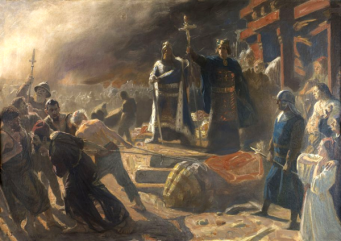 Valdemar with best buddy Archbishop Absalon, toppling the heathen god of the Wends
Valdemar with best buddy Archbishop Absalon, toppling the heathen god of the Wends
If we start at the beginning, Ingeborg was the youngest of the eight surviving children born to Valdemar the Great of Denmark and his wife, Sofia of Minsk. Seeing…
View original post 1,767 more words


October 25, 2016
Crown Prince Rudolf and the events at Mayerling – part 3
On the night of 30th January 1889, Crown Prince Rudolf of Austria, shot his mistress Baroness Marie Vetsera before shooting himself several hours later in what was, undoubtedly, a suicide pact. In a letter to his mother, Empress Elisabeth (Sisi), Rudolf admitted that he had taken Marie along on a journey he was afraid to make alone. She gave him courage.
As a suicide, there was grave danger that Rudolf would be denied a Christian burial, which would have caused additional grief to his devout father, the emperor. The royal physician who had first examined the body, Dr. Widerhof, could not be prevailed upon to change his opinion that the death was suicide. But he did agree to declare the crown prince mentally unbalanced on the night of his death, allowing Rudolf a church funeral and burial among his Habsburg ancestors in the imperial crypt of the Capuchin Church in Vienna.
 Capuchin Church in Vienna
Capuchin Church in Vienna
I imagine it was a grand funeral, with vast silent crowds, masses of flowers, lots of black-clad dignitaries from other states come to pay their last respects… But it wasn’t at all what Rudolf wanted. In the letter to his mother he asked to be buried next to Marie in the church of Heiligenkreuz, an old abbey in the Vienna Woods. Well, obviously that didn’t happen.
Initially Marie’s body was carried into a store room and covered in a white cloth. The less people who knew of her presence the better. I suspect she was neglected for a time while everyone was concerned with notifying the parents of the crown prince and removing his body to his apartment in the Hofburg. Eventually, however, two of Marie’s uncles arrived after midnight to claim her body which they loaded into a carriage and propped up on the seat between them. (I wonder what their conversation between them was like?)
Marie’s body was in fact taken to Heiligenkreuz, where she was buried rather quickly with only her uncles attending. Because it was assumed she was a suicide the uncles had to persuade the abbot to allow her burial. Perhaps he said a few words over her.
But she was not allowed to rest. Four months later her mother had the grave opened and her body removed to a better site. The simple wooden coffin was replaced by a copper one and a monument erected. There Marie slept peacefully until just after World War II when some Russian soldiers broke into the grave – perhaps hoping to loot it of valuables. When the grave was repaired by the monks they observed that the skull appeared to have no holes in it.
Fast forward to 1955 when the grave was again opened and inspected by a physician and an expert in grave preservation, (Who knew there was such a profession?) with a member of the Vetsera family present. They too found no bullet holes in the skull, although there was some trauma. It might have been done by the red army guys, or it might have happened on the night of January 30th 1889, which would mean Rudolf had not shot her. After some investigation, poor Marie’s remains were reburied again.
Probably at this point the conspiracy theorists began to get excited. Then in 1991 along came one of those excitable conspiracy theorists. Helmut Flatzelsteiner was obsessed with the Mayerling affair, and utterly convinced that the crown prince had been murdered – and never mind those farewell letters written in his own hand. Clever forgeries, no doubt. Anyway, this prince among men removed the bones secretly at night and kept them for two years before having them examined at his own expense by forensic experts. The examiners could not be certain what had happened because the skull was in a state of decomposition. Then Flatzelsteiner tried to sell both the story and the skeleton to a newspaper and that got the attention of the police.
The bones were given to a Medical Institute in Vienna where they were forensically examined again. But since a piece of the skull was missing, it could not be concluded if there was a bullet hole. After a court case, Flatzelsteiner was forced to pay the abbey 2000 euros for the desecration of the grave.
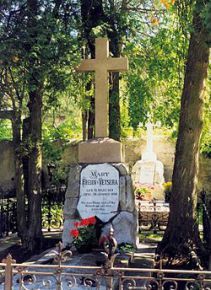 Marie Vetsera’s grave at Heiligenkreuz
Marie Vetsera’s grave at HeiligenkreuzMarie’s remains were finally reburied in October 1993. I wonder if she would have agreed to the suicide pact if she had known of the outrages that were to be perpetrated on her body after death.
Meanwhile, Rudolf has been sleeping the everlasting sleep undisturbed among his Habsburg ancestors in the imperial crypt of the Capuchin Church in Vienna.


October 11, 2016
Emperor Maximilian of Mexico was a Wittelsbach too.
Actually, he was only half a Wittelsbach. The other half was a Habsburg. His father was Archduke Franz Karl of Austria and his mother was Princess Sophie of Bavaria, so he was a brother of Franz Josef, Emperor of Austria. Born on 6th July 1832 at Schonbrunn Palace in Vienna, he was an intelligent lad who learned six languages in the schoolroom and later a seventh – Spanish. Even then there might have been a spirit of competitiveness between him and his elder brother, only two years older, as he tried to demonstrate that he was the better man. He was his mother’s favourite. Not unnaturally, this opened a gulf between the brothers which only grew wider as the years passed.
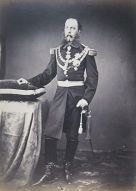 Emperor Maximilian
Emperor MaximilianIn 1848 revolution swept across Europe. Maximilian accompanied his brother on campaigns to put down the rebellions throughout the empire and was horrified by the brutality of the reprisals as hundreds of rebels were executed and thousands imprisoned for the crime of wanting a different form of government. He was a progressive thinker, which did not accord well with Franz Josef’s deep conservatism.
Perhaps to get rid of his more popular younger brother, and also to satisfy his ambition, Franz Josef gave him command of the Austrian Navy.
In July 1867, Maximilian married Princess Charlotte, daughter of the King and Queen of Belgium. Although they remained childless, it appears to have been a happy marriage.
After a visit to Italy, where radical nationalist feelings were heating up, Franz Josef appointed his brother Governor-General of Venetia-Lombardy. Maximilian was an odd choice. While he was not without ambition, he had the soul of an idealist and the mind of a liberal reformer. He and his pretty wife were liked by the Italians, on a personal level, but deeply resented as representatives of a despotic government. In fact, he was far more sympathetic to the Italian desire for freedom than to the determination of the empire to keep under its aegis a province whose sole purpose was to increase Austrian revenues.
Franz Josef was not happy. His brother was not supposed to interfere in politics and advise on foreign policy. He was meant to be a figurehead.
While nationalists and radicals were fomenting rebellion around him, the archduke remained at his post to the end. ‘I am not one to turn away in time of danger,’ he wrote. ‘Where there is a fire I shall help to the last moment, even though I have to stand in the midst of flames.’ Prophetic words, as it turned out. The end came when he was relieved of his post. Shortly after, Italy was engulfed in revolution with the result that Austria lost all her Italian provinces and unified Italy was born. After the disastrous battle of Solferino, the emperor became so unpopular that there were calls for him to abdicate in favour of his younger brother. Another bone of contention between them.
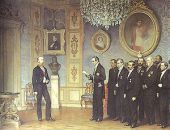 Mexicans offering the imperial throne to Maximilian
Mexicans offering the imperial throne to MaximilianIn 1859 a group of Mexican monarchists visited Maximilian and offered him the throne of Mexico as emperor. Perhaps he was chosen because the Habsburgs had once ruled New Spain. In any case, he was reluctant at first for reasons his doting mother was not slow to point out. It was a backward country, barely civilized, halfway around the world and torn by civil strife. For years the conservative church party had fought the progressive anti-clerical party led by President Benito Juarez.
But then the French got involved. Louis Napoleon had sent an expedition to gold- and silver-rich Mexico, and liked what they reported. Capitalists and industrialists moved in, with soldiers to guard them. The French were afraid that the United States, still recovering from their civil war, would object to European interference on their continent, and also that Spain might want to recover lost territory. What was needed to legitimize their occupation, they decided, was a monarchy. Louis Napoleon urged Maximilian to accept. To the astonishment of his family and friends, he agreed, with the provisos that the crown was offered by the Mexican people and guaranteed by France.
There were a number of reasons for his acceptance beyond ambition, the desire for glory and the cache of being an emperor. Since the Italian War he and Franz Josef had not been on good terms. He had come to the conclusion that there was no place for him in his brother’s empire. There was also something he shared with his sister-in-law, Sisi: wanderlust, a longing for adventure, to visit exotic places and experience different cultures. Finally, there was his idealism. His first effort would be to reconcile the warring parties.
Franz Josef was quite happy to see him go, being jealous of his more intellectual, charismatic and artistic brother. He remembered, too, how after the Italian War the people of Vienna – his beloved city – had called for him to abdicate in favour of Maximilian. On the eve of Max’s departure, Franz informed him that the Reichsrat insisted he must resign all rights to the imperial throne (he was second in line after Archduke Rudolf) and warned him that if he should encounter difficulties the empire could not become involved. He would no longer be an Austrian citizen. It was a lot to give up.
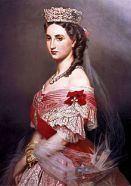 Empress Carlotta
Empress CarlottaHe set sail with Charlotte, now renamed Empress Carlotta, and landed at Vera Cruz on 21st. May 1864 to a very cold reception by the liberal city. His situation was very nearly a replay of his role in Italy. Although he sympathized with Juarez and his aim to free the exploited country, he was naturally viewed by both sides as being a tool of the conservatives, and of France. Juarez wanted nothing to do with a monarchy.
Maximilian and Carlotta set up residence in Chapultepec Castle in Mexico City and entertained as monarchs were expected to do. They were never crowned, however, due to constant fighting between the French soldiers and the republicans. Nevertheless, he managed to do some good during his short time in Mexico. He restricted working hours and abolished child labour. He cancelled all debts for peasants over 10 pesos and decreed that no longer could they be bought and sold for the price of their debt. He also broke the monopoly of the hacienda stores and restored communal property. Shocked by the living conditions of poor Mexicans, Carlotta held parties for rich Mexicans to raise money for the poor.
Max was not popular among his own allies, the conservatives and fanatical clerics, who disliked him for his tolerance and liberalism. He had even upheld some of Juarez’s decrees: land reforms, religious freedom, and extending voting rights. He went so far as to offer Juarez amnesty and the post of prime minister, but Juarez refused.
Max’s first mistake was to order the shooting of any captured followers of Juarez in retaliation for the execution by the Juaristas of those who supported the empire. His second was the ‘Black Decree’ which stated that anyone belonging to armed bands existing without authority would be tried by courts-martial and subject to execution if found guilty. It is estimated that more than 11,000 of Juarez’s supporters were executed in accordance with this decree, which only served to intensify resistance.
The curtain was about to fall on the embryonic empire. With its civil war over, the United States began secretly feeding arms and supplies to the republicans while at the same time putting pressure on France to withdraw. Although he had been instrumental in persuading Max to accept the imperial throne, painting a rosy picture, in 1866, Louis Napoleon yielded and removed his troops from Mexico, leaving Maximilian without financial resources or military protection. Carlotta left in order to seek help for her husband from among the crowned heads of Europe. The trouble was, Maximilian had lost his status as a Habsburg prince and Austrian archduke.
Though he was advised to abdicate, once again Maximilian refused to ‘turn away in time of danger’, which was his third and last mistake. He fought on with the aid of about 8,000 loyalists. February 1867 found him in Queretaro, besieged by the republicans. In May the city fell and Max was captured.
Following a court-martial, he was sentenced to death. Now Franz Josef scrambled to have his brother reinstated as an Austrian archduke. Many notable liberals sent telegrams to Mexico pleading that the emperor be spared. The U.S. was moved to send a plea for clemency. Juarez actually liked Maximilian, but he put his personal feelings aside. Max’s death was necessary both because of those who had been killed fighting imperialist forces and also to send a message that Mexico would not tolerate a foreign-imposed government.
One of Max’s followers hatched an escape plan that called for him a assume a disguise. In a final act of Habsburg hubris, he refused because he felt shaving his beard off to avoid recognition would cause him a loss of dignity if he were recaptured.
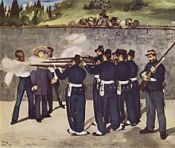 Maximilian’s execution
Maximilian’s executionSo, on 19th June 1867, in front of a firing squad, the life of another Wittelsbach ended. It was such a shame because Maximilian and Benito Juarez, although from very different worlds, were both liberal reformers.
Maximilian’s embalmed body was eventually retrieved from Mexico and placed in the imperial crypt in Vienna among his ancestors.
When she learned of her husband’s death, Carlotta had a complete mental collapse. She spent the rest of her life under medical supervision in padded rooms in a Belgian castle. She died in 1927.


October 4, 2016
Crown Prince Rudolf and the events at Mayerling – Part 2
So what did happen that night of January 29th-30th 1889? As with the unexpected/violent/mysterious death of any famous person, there are many theories, including assassination. However, I believe those theories can be put to rest by Rudolf’s request – as mentioned in my previous post – that Mitzi Kaspar should join him in a suicide pact. Mitzi refused, so he found one who was willing to die with him. That Baroness Marie Vetsera was a willing participant is proved by her farewell letters to family members, which make clear her intention to commit suicide along with Rudolf ‘out of love’.
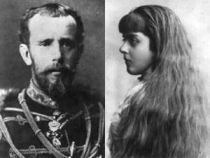 Rudolf and Marie
Rudolf and MarieMarie was smuggled into the prince’s bedroom in the hunting lodge. When Rudolf arrived two of his friends were already there: Prince Philip of Coburg and Count Josef Hoyos. Three servants were in attendance: Loschek, Rudolf’s faithful valet, a cook and a maid. When Rudolf retired that night, Prince Philip had left for a family dinner in Vienna and Hoyos went to his bed in an annex.
In the morning, when Loschek went to awaken his master, there was no response. Because he was aware of Marie’s presence, he was unwilling to force the door until Prince Philip returned for breakfast and gave permission. After further repeated attempts to rouse the prince, Loschek broke into the room. One can only imagine their shock at what they found: Marie on the bed, already cold and rigid, with her long blonde hair spread around her and a single rose held in her clasped hands; the prince in a half-sitting position beside her, bleeding from the mouth. A glass stood on the bedside table. Perhaps because the room was in semi-darkness, it was assumed by Count Hoyos that Marie had poisoned the prince with strychnine – which apparently causes bleeding from the mouth – and then shot herself. For fear of doing the wrong thing, the men closed and locked the door of the bedroom without examining the bodies. Prince Philip was so devastated that he was of little use, and it was Count Hoyos who carried the erroneous news to Vienna.
Even at such a tragic time, Hoyos ran into the barrier of palace protocol. The Lord High Steward said it lay in the province of the Foreign Minister, but the Foreign Minister could not be found, so the Adjutant General was sought, but he insisted that it must be handled by the Controller of the Crown Prince’s household. In the end, they all came to the conclusion that only the Empress could tell her husband, and it fell to Baron Nopsca, her chamberlain, who loved her dearly, to break the news to the Empress that her only son was dead. When Franz Josef left Sisi’s apartment he was a broken man.
Special black-bordered editions of the newspapers which appeared in the afternoon carried the story that the prince had died of heart failure. This information came in a bulletin from the Prime Minister, Count Taaffe. At this time, however, no one knew the truth.
A royal commission, headed by Franz Josef’s personal physician, Dr. Widerhofer, was sent to Mayerling. It wasn’t until the doctor threw open the shutters that he saw the gun lying on the floor in a pool of blood, Rudolf’s skull showing an entrance and exit wound, and the girl beside him with the same kind of wound. On examining the bodies the doctor came to the inescapable conclusion that the baroness died six to eight hours before Rudolf turned the gun on himself.
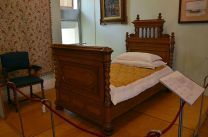 Rudolf’s bed at Mayerling
Rudolf’s bed at MayerlingWhat had he been doing in those hours as he sat beside the body of the young girl who had loved him so much she was willing to die with him? Was he having second thoughts? Was he trying to talk himself into – or out of – killing himself? Having shot Marie, he must have come to the conclusion there could be no turning back.
But perhaps he was writing the half dozen letters that were found on his bedside table, not one of which was to his father. To his mother, he wrote: ‘I have no right to live, for I have killed.’ He also asked his mother to carry out Marie’s dearest wish, which was to be buried beside him in the little church of Alland.
Why did a man who many of us would envy choose suicide? I can only speculate. No matter their status in life, when a person looks back at their youthful aspirations and has met none of them, and looks at the present and sees nothing there that fulfills or gives pleasure, and looks to the future and sees no hope, that person must despair. Thus it was for Rudolf. He had not succeeded in any of his early goals. His marriage was so unsatisfactory he had applied to the Vatican for an annulment. His health was deteriorating. A serious riding accident aggravated the headaches he had been suffering from for years. Injections of morphia were the usual remedy in those days. Unfortunately, Rudolf became addicted. Distracted by her own unhappiness, his mother largely ignored him and his father was an arch-conservative. As a liberal, Rudolf was opposed to his father’s policies. He must have been a great disappointment to Franz Josef. He couldn’t even look forward to the day when he would be emperor. He believed the empire would end with his father’s reign, and only the Austrians’ love for their aging, hard-working, dutiful emperor prevented them from rushing into the comforting embrace of the German Federation. Given no responsibility, bored, jaded, and discontent, Rudolf could see no better way than ending a life he saw as increasingly useless.
Dr. Widerhofer had no choice but to tell Franz Josef the truth, making it clear that Rudolf had killed Marie and then committed suicide. Now there was a danger that Rudolf, Crown Prince of the Austrian Empire, might be denied the right of a Christian burial. As tragic as his death was, this fear must have compounded his devout father’s grief.
So, what we today would call the palace’s ‘spin’ swung into action.
 The body of Rudolf
The body of RudolfIn the next post: the burials of Rudolf and Marie and the palace’s maladroit efforts to conceal the truth.


September 26, 2016
Crown Prince Rudolf and the events at Mayerling.
It must seem to those who have been following this blog for the last few weeks that many of the Wittelsbachs possessed some kind of recessive gene that bequeathed a dangerous heritage to their children. Was it because of generations of intermarriage that so many met with tragic fates? Or plain happenstance? Crown Prince Rudolf, the third child and only son of Emperor Franz Josef and Empress Elisabeth (Sisi) of Austria, was one of the most tragic of a tragedy-ridden family.
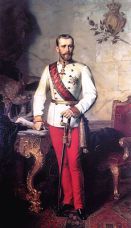 Crown Prince Rudolf
Crown Prince RudolfRudolf was born at at the imperial palace of Schonbrunn in Vienna, on August 21st. 1858. While Te Deums were being celebrated in the churches of the empire, and the young mother was recovering from a difficult birth, Franz Josef placed the Order of the Golden Fleece in his son’s cradle and made him a colonel, giving notice what he expected of his son.
Rudolf was a precocious child. He was given the best of tutors, and at the age of six he was able to understand written French, Czech, Italian, Magyar, as well as his native German. In contrast to his sister Gisela, who was robustly healthy, he suffered recurring bouts of fever and other ailments which caused his parents deep anxiety. When he turned seven Franz Josef decided he must have a household of his own and be put in charge of a military tutor to prepare him for his future.
The tutor was Count Leopold Gondrecourt, whose ideas of disciplining a little boy – and heir to the imperial throne – were nothing less than sadistic. He once shut Rudolf behind the gates of the Tiergarten (wild game preserve) and terrified him by shouting that a wild boar was coming. It was not unusual for the child to be roused in the middle of the night, taken outside and drilled in the deep snow.
The trouble was that Rudolf was far more a Wittelsbach than a Habsburg. He was a highly strung child with his mother’s sensitive nature. He became anxious, frail and even sicklier. Sleeping poorly, in the mornings he was too tired to attend properly to his lessons and was punished for it. All Gondrecourt knew was to drill him harder to toughen him up.
Neither his mother nor his grandmother approved of this kind of treatment, but Franz Josef stubbornly insisted they were the methods used on young cadets and would in the long run prove beneficial to Rudolf.
Unable to bear her son’s suffering any longer, afraid she would lose him as she had her firstborn, Sisi gave Franz an ultimatum. Either Gondrecourt goes or she goes.
Gondrecourt went, and Sisi appointed a gentler tutor, who was devoted to the Crown Prince and gave him a liberal education. Under his care Rudolf’s general health improved rapidly, but he never quite recovered from the terror of his early years.
As he grew he developed a passion for history and natural science. He was an intelligent and imaginative child, but by the age of ten he was developing some undesirable traits. After hunting with his father, he drew pictures of animals with great splashes of blood on them. He began to criticize and make light of spiritual matters. Although he was as good a shot as his father, he was a timid horseman and never attained the proficiency in the saddle his mother would have wished. He was also a physical coward and saw himself that way too.
At the age of twenty-one Rudolf fell under the influence of his aide-de-camp, Count Karl Bombelles, a roue of the first order. Rudolf was an apt pupil, who indulged in love affairs with all manner of women. Soon there was nothing Bombelles could teach him. He had a reputation for being wild and undisciplined. His parents were worried.
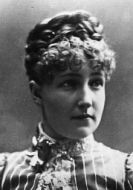 Princess Stephanie of Belgium
Princess Stephanie of BelgiumA marriage to Princess Stephanie of Belgium was arranged. By all accounts, she was a plain little thing, hardly likely to keep the libidinous Rudolf out of other ladies’ beds. Even on her wedding day the princess was outshone by her divinely beautiful mother-in-law, Empress Elisabeth.
The Crown Princess became pregnant and gave birth to a healthy girl. Unfortunately, the doctors whispered it was unlikely she would have another child. Never popular with court or city, the poor girl had failed in her prime duty. In spite of his own disappointment, Rudolf was a kind and affectionate husband and a loving father. But Stephanie was jealous and demanding. She did not know how to manage a man like her husband, who had all the beauties of Vienna vying for his attention.
At twenty-one Rudolf so adored life that he once said, ‘If only I could live till I am a hundred. It is terrible to think that in the end one has to die.’ At thirty-one, he was bored, jaded and fed up of the life his father’s ministers forced him to endure. He was a ‘liberal’, which meant anti-clerical, anti-aristocracy, and anti-establishment, a bit of a rebel. Like his near counterpart in Britain, the future Edward VII, he was an heir given little power or responsibility, just waiting for his aging parent to die.
By this time the Crown Prince was coming to loath his wife, had been unable to accomplish anything useful in his life, was often at odds with his father and was increasingly depressed over what he saw as the eventual disintegration of the empire. He could see no alternative but death. Perhaps he knew that Vienna in the 1880s had the highest suicide rate in Europe.
Mitzi Kaspar was a cheerful Viennese woman and ‘friend’ of the Crown Prince. One evening he confessed that his life was a burden and he wanted to end it. But he didn’t want to die alone. If she loved him, she would join him in a suicide pact. At first Mitzi tried to laugh the matter off, treating it as a bizarre joke, but when he kept returning to it she began to realize that he was obsessed with the idea of suicide. She went to the President of Police, Baron Kraus, in order to help Rudolf, but all Kraus did was to get her to sign a statement and warn her that if she repeated her story to anyone she would be prosecuted. Nothing further was done.
But there were other women who were madly in love with Rudolf. Sometime in early January 1889, Marie Vetsera became his mistress. She was seventeen years-old, probably impressionable, but far from innocent. She must have known her role as the prince’s mistress would be as short-lived as so many others before her. Did she see herself as a romantic and tragic heroine? Was it her way of ensuring that her name would be linked with Rudolf’s forever?
They made their plans. Rudolf went with some of his friends to hunt at Mayerling. Marie was smuggled secretly into his bedroom at the lodge. On the morning of January 30th, the bodies of Rudolf and Marie were found, both with gunshot wounds to the head, unleashing a barrage of questions and speculation, deceit and concealment.
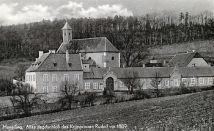 Mayerling in 1889
Mayerling in 1889What happened that night and in the following days is a true horror story. More about that in my next post.
You can read more about Rudolf’s youth in my latest book.
https://www.amazon.com/Gilded-Cage-Susan-Appleyard-ebook/dp/B01GW89Z8G


September 24, 2016
Five Fascinating Facts about the Venerable Bede
Facts about Bede, Britain’s first historian
1. Bede is known as the ‘Father of English History’. Bede, also known as Saint Bede and as the Venerable Bede, was born in around 672 and died in 735. Bede’s great work is Historia ecclesiastica gentis Anglorum, or History of the English Church and People, which he completed in 731. The book charts the establishment of Christianity in the British Isles, particularly in England. In 1899, Bede became the only English-born person to be recognised as a Doctor of the Church.
2. However, Bede wrote around 60 other books in addition to his History. What’s even more remarkable, given the Vikings raids on the British Isles which followed shortly after Bede’s death, most of his books have survived.
View original post 278 more words


September 7, 2016
A Future Emperor’s Early Victories, Part 3
Just a few years after Alexios Komnenos’ triumph over Roussel Balliol’s rebellion, the Byzantine Empire was again in chaos. In the province of Dyrrakhion, along the Adriatic Sea, a new threat had emerged: Nikephoros Bryennios the Elder, the province’s disgruntled doux (military governor), was massing troops in rebellion. In Anatolia, a separate rebellion under Nikephoros Botaneiates, the aged provincial governor, had already begun marching toward Constantinople. Emperor Michael VII Doukas, weary and scrambling to keep the empire together, was surrounded.
This time, Michael chose diplomacy instead of battle. With a hostile force on both sides of the Bosporus, the required all-out attack on either would have left the capital open to the other, and Michael knew it. He chose instead to send some of the empire’s best diplomats to negotiate with Bryennios, perhaps hoping that a speedy, peaceful resolution would allow him to focus his military efforts on…
View original post 636 more words


August 11, 2016
In a Gilded Cage
You guys, this is my favorite kind of book; a historical fiction novel. I was ecstatic when Susan Appleyard sent me In a Gilded Cage to review. It’s the tale of Empress Elisabeth of Austria, the wife of Emperor Franz Joseph I. If you love some real facts with a touch of fiction, then this is a book for you.
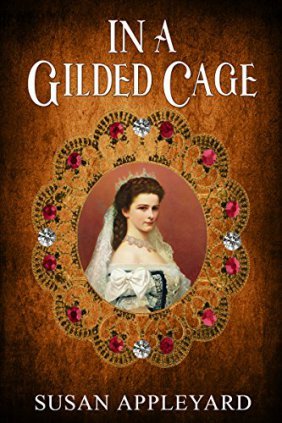
Heat Level:♥
Overall Rating: 5/6 Glass Slippers
Genre: Historical Fiction
Elisabeth, referred to also as “Sisi”, begins her life as a Duchess of Bavaria, living a fairly carefree existence during her early years. However, her days of informal living comes to an abrupt halt when she learns that she is to accompany her sister Helene to court in order to see her married off to Emperor Franz Joseph. But, Franz is drawn to Sisi and declares that she will be his bride.

The story highlights Sisi’s trouble fitting in the…
View original post 228 more words




